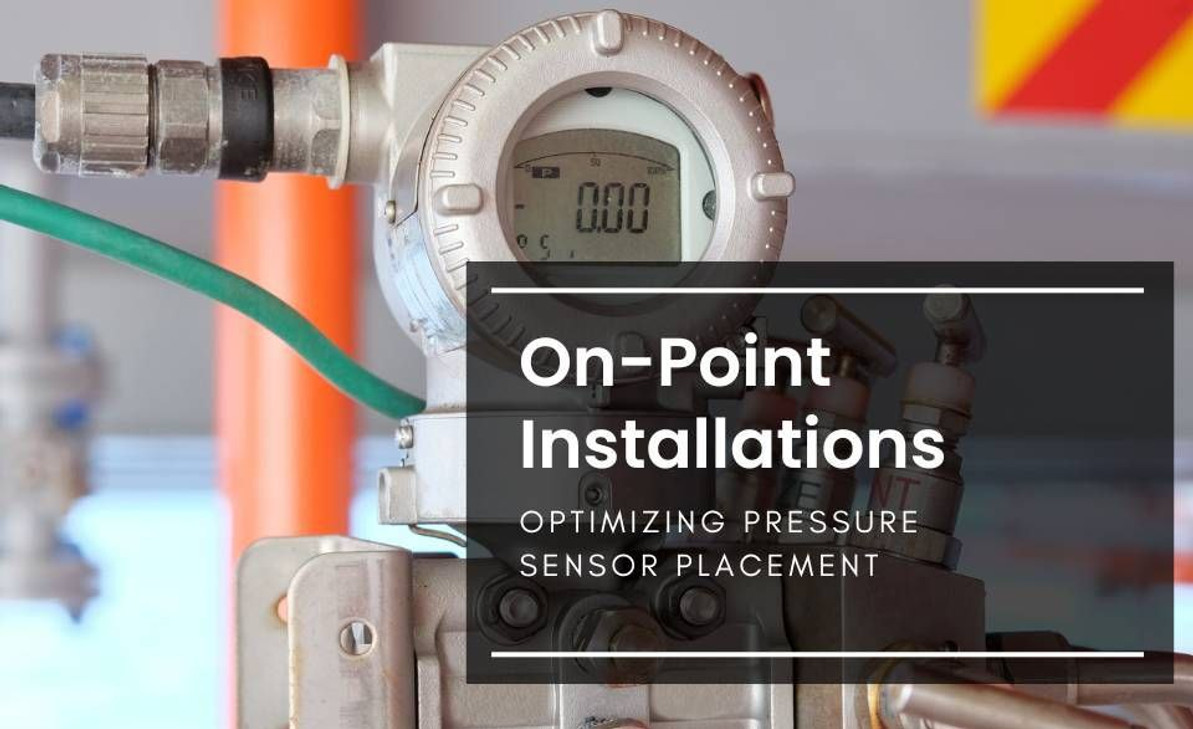On-Point Installations: Optimizing Pressure Sensor Placement
Pressure sensors, the silent sentinels of modern technology, stand as unassuming yet indispensable devices across various industries. Imagine these unobtrusive components as vigilant guardians, ceaselessly monitoring the pulse of gases and liquids within systems. From ensuring optimal pressure in manufacturing plants to safeguarding precise measurements in research laboratories, pressure sensors silently dictate the efficiency and safety of countless processes.
In this world of intricate systems and precise measurements, pressure sensors emerge as the unsung heroes, seamlessly integrating into diverse environments. Their placement, calibration, and integration are pivotal, influencing the accuracy and reliability of crucial data streams. Exploring the nuances of these sensors unravels a world where seemingly subtle details wield immense power in steering the functionality and safety of complex machinery.
Let's delve into the multifaceted realm of pressure sensors, uncovering their pivotal role, nuances in application, and the critical considerations essential for their effective deployment across various environments and industries. Join in the exploration of these unassuming yet vital devices that quietly shape the very fabric of modern technological landscapes.
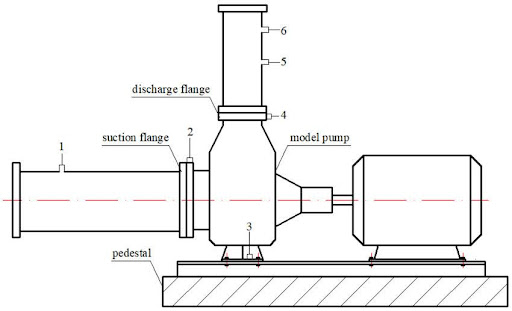
Fig 1. Installation position of pressure sensors
How can use pressure transmitters?
Pressure transmitters are versatile devices used in various industries for different purposes. Here are some common ways they're used:
- Installation: Mount the transmitter appropriately, ensuring it's connected securely to the system where pressure needs monitoring. This might involve following specific guidelines provided by the manufacturer or industry standards.
- Calibration: Before using the transmitter, it's crucial to calibrate it to ensure accurate pressure readings. Calibration involves adjusting the transmitter to match known pressure standards. This can be done by professionals or by following the device's manual.
- Monitoring and Maintenance: Once installed and calibrated, the transmitter continually monitors pressure levels. Regular checks and maintenance ensure the device functions accurately and reliably.
- Data Interpretation: The data from the pressure transmitter can be displayed on control panels, and computers, or integrated into automated systems. Understanding and interpreting this data is key to making informed decisions about the system's operation and maintenance.
Always refer to the manufacturer's instructions and industry standards when installing, operating, and maintaining pressure transmitters to ensure proper functionality and safety.
What are the important considerations when applying a pressure sensor?
When applying pressure sensors, several crucial considerations ensure accurate measurements and the successful integration of the sensor into a system. Here are the key factors to keep in mind:
1. Application Requirements:
- Pressure Range: Ensure the sensor's pressure range matches the expected range in the application to avoid saturation or damage.
- Accuracy and Precision: Choose a sensor with the required accuracy and precision suitable for the application's needs.
- Response Time: Consider the response time needed for the application's dynamic pressure changes.
2. Environmental Conditions:
- Temperature Range: Verify that the sensor can operate within the temperature range of the environment where it will be used.
- Media Compatibility: Ensure the sensor materials are compatible with the measured media (liquid, gas, corrosive substances, etc.).
- Vibration and Shock Resistance: Select sensors capable of withstanding vibrations or shocks if the environment is prone to these conditions.
3. Installation and Mounting:
- Proper Placement: Install the sensor in a location that provides representative measurements without interference or pressure losses.
- Mounting Type: Choose the appropriate mounting method based on the environment and system requirements (direct, remote, flange, etc.).
- Alignment and Orientation: Align and orient the sensor correctly as per manufacturer guidelines for accurate readings.
4. Calibration and Maintenance:
- Calibration Schedule: Establish a regular calibration schedule to ensure continued accuracy over time.
- Maintenance Plan: Implement a maintenance plan to inspect, clean, and troubleshoot sensors periodically.
5. Electrical Considerations:
- Signal Compatibility: Ensure the sensor's output signal matches the input requirements of the monitoring or control system.
- Electrical Interference: Protect the sensor from electromagnetic interference or ensure it has appropriate shielding if needed.
6. Safety and Compliance:
- Safety Standards: Ensure sensors meet relevant safety standards and guidelines for the intended application.
- Regulatory Compliance: Verify that the sensor complies with industry-specific regulations and certifications if applicable.
7. Cost and Longevity:
- Cost-Effectiveness: Consider the initial cost versus the long-term benefits and reliability of the sensor.
- Expected Lifespan: Choose sensors with a lifespan suitable for the application to minimize replacement frequency.
8. Data Handling and Integration:
- Data Output: Ensure compatibility with data acquisition systems or control systems for seamless integration.
- Communication Protocols: Verify if the sensor supports required communication protocols (analog, digital, Modbus, etc.).
By carefully considering these factors, you can select, install, and maintain pressure sensors that best meet the specific needs and conditions of the application, ensuring accurate and reliable pressure measurements.
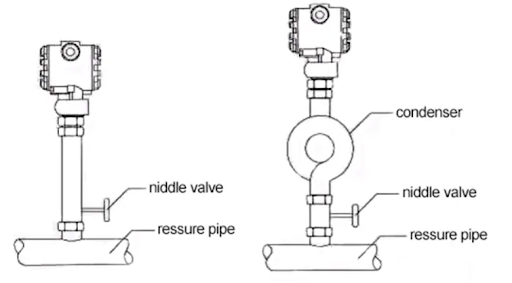
Fig 2. Pressure sensor installation
How can install a pressure transmitter?
Installing a pressure transmitter involves several steps to ensure proper functioning and accurate readings. Here's a general guide:
Steps for Installing a Pressure Transmitter:
1. Preparation
- Select the Right Location: Choose an appropriate location for installing the transmitter. Consider factors like accessibility, environmental conditions, and the type of pressure being measured.
- Ensure Safety: Shut down the system if necessary. Follow safety protocols and wear appropriate protective gear.
2. Mounting
- Positioning: Mount the transmitter in a location that allows easy access for maintenance and calibration.
- Alignment: Ensure proper alignment with the process pipe or vessel. Use fittings and adapters if needed to connect the transmitter securely.
- Secure Installation: Use proper mounting hardware and ensure a tight seal to prevent leaks.
3. Electrical Connections
- Wiring: Connect the electrical cables of the transmitter to the control system or monitoring device following the manufacturer's wiring diagram.
- Grounding: Properly ground the transmitter to minimize electrical interference and ensure safety.
4. Calibration and Configuration
- Initial Calibration: Before operation, calibrate the pressure transmitter according to the manufacturer's instructions. This may involve setting zero and span points to match known pressure values.
- Configuration: Configure the transmitter settings, such as output signals, units of measurement, and any specific parameters required for your application.
5. Testing
- Check for Leaks: Conduct a pressure leak test to ensure there are no leaks in the connections or the transmitter itself.
- Functional Test: Apply pressure to the system and verify that the transmitter accurately measures and transmits the pressure readings.
6. Integration and Operation
- Integrate with Control Systems: Integrate the transmitter into the overall control or monitoring system. Verify that the data is being received and displayed correctly.
- Start-Up: Once installed and tested, start the system and monitor the pressure readings to ensure normal operation.
7. Documentation:
- Record Keeping: Maintain documentation of the installation process, calibration details, and any adjustments made. This documentation is helpful for future reference and troubleshooting.
8. Regular Maintenance:
- Schedule Inspections: Plan regular inspections and maintenance to ensure the transmitter continues to function accurately and reliably.
Always refer to the specific installation instructions provided by the transmitter manufacturer, as procedures can vary based on the type and model of the device. If unsure or if dealing with complex systems, it's advisable to involve a qualified technician or engineer for installation. Safety and accuracy are paramount when installing pressure transmitters.
Where should a pressure sensor be placed?
The placement of a pressure sensor, while dependent on the specific application and system, is crucial for accurate measurements. Here are considerations for optimal sensor placement:
1. Close to the Measurement Point:
Proximity: Ideally, place the sensor as close as possible to the point where pressure needs to be measured to minimize inaccuracies caused by pressure losses in piping or tubing.
2. Accessibility for Measurement:
Accessibility: Ensure the sensor is installed in a location that allows easy access for maintenance, calibration, and potential replacements without disrupting system operations.
3. Representative Measurement:
Representative Point: Position the sensor where it can provide a representative measurement of the overall system pressure without being affected by localized turbulence or disturbances.
4. Avoidance of Dead Spaces:
Dead Spaces: Avoid locations in the system where pockets of stagnant fluid or air can form, as this can lead to inaccurate pressure readings.
5. Alignment with Flow (if applicable):
Flow Direction: For applications involving flow measurements or differential pressure sensing, align the sensor properly with the flow direction to ensure accurate readings.
6. Protection from External Factors:
Environmental Protection: Shield the sensor from harsh environmental conditions, excessive vibration, extreme temperatures, or corrosive substances that could affect its accuracy and longevity.
7. Minimize Pressure Pulsations:
Pressure Fluctuations: Avoid placing the sensor in areas prone to pressure pulsations or fluctuations that could impact the stability of measurements.
8. Consideration for Different Applications:
Specific Applications: Different applications (such as HVAC systems, industrial processes, automotive, etc.) may have unique requirements for sensor placement based on the intended use.
9. Safety and Regulatory Compliance:
Compliance: Ensure that the sensor placement adheres to safety regulations and industry standards relevant to your application.
10. Regular Inspection and Calibration:
Maintenance: Periodically inspect the sensor's placement to ensure it remains in the optimal position and conduct regular calibrations to maintain accuracy.
11. Consult Manufacturer Guidelines:
Always refer to the manufacturer's guidelines and recommendations for the specific pressure sensor model. They often provide specific instructions regarding the ideal placement and installation requirements for accurate and reliable measurements. Consulting with experts in the field or experienced technicians can also offer valuable insights into the best placement practices for pressure sensors in different applications
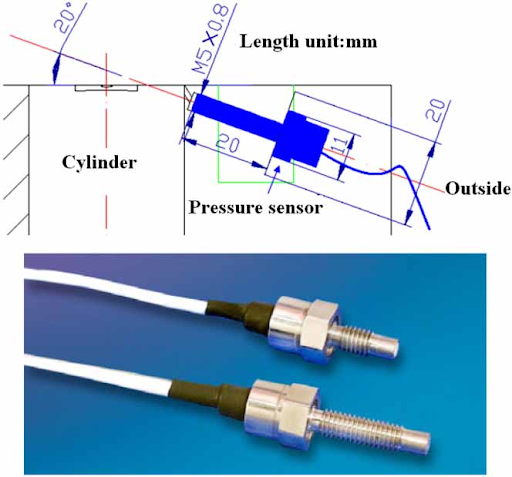
Fig 3. Schematic of pressure sensor installation
Which factors can affect pressure sensor installation?
Several factors can significantly impact pressure sensor installation, potentially affecting its accuracy, reliability, and overall performance:
How environmental conditions can affect pressure transmitter installation?
Environmental conditions play a significant role in the installation and performance of pressure transmitters. Here's how various environmental factors can affect pressure transmitter installations:
Different installation ways in different environments
Different environments require specific considerations when installing pressure transmitters to ensure accuracy and longevity. Here are installation considerations for various environments:
1. Indoor Industrial Environments:
- Standard Mounting: Direct mounting or flange mounting can work well in controlled indoor environments where temperature and conditions are stable.
- Vibration Dampening: Use vibration-resistant mounts or isolators if machinery or equipment nearby generates significant vibrations.
2. Outdoor Environments:
- Weather Protection: Enclosures or protective covers shield the transmitter from weather elements like rain, snow, and extreme temperatures.
- Corrosion Resistance: Use corrosion-resistant materials or coatings to protect against environmental corrosion.
3. Hazardous or Explosive Environments:
- Explosion-Proof Housing: Install transmitters with enclosures designed to withstand and contain potential explosions in hazardous areas.
- Intrinsically Safe Transmitters: Use transmitters specifically designed for intrinsically safe environments where sparks could trigger explosions.
4. Underwater or Submerged Applications:
Submersible Transmitters: Install pressure transmitters designed explicitly for underwater use, ensuring they are waterproof and corrosion-resistant.
5. Extreme Temperature Environments:
- Insulation or Heating Elements: In extremely hot or cold environments, insulation or heating elements can maintain a stable operating temperature for the transmitter.
- Thermal Protection: Ensure the transmitter is shielded from direct exposure to extreme temperatures to prevent damage.
6. Corrosive Environments:
- Diaphragm Seals: Use diaphragm seals made of materials resistant to corrosion for transmitters in contact with corrosive substances.
- Chemical-Resistant Coatings: Apply protective coatings or enclosures resistant to chemical exposure.
7. High-Vibration Environments:
Vibration Isolation: Use shock mounts or isolators to minimize the impact of vibrations on the accuracy of pressure measurements.
8. Remote or Inaccessible Areas:
Wireless Transmitters: Consider using wireless pressure transmitters to avoid the need for extensive cabling in remote or difficult-to-access locations.
9. Hygienic Environments (e.g., Food or Pharmaceutical Industries):
Sanitary Mounting: Employ specialized mounting fittings designed for hygienic environments to ensure cleanliness and compliance with industry standards.
10. High-Pressure Environments:
Reinforced Mounting: Ensure secure and reinforced mounting to withstand high-pressure conditions without compromising accuracy.
Each environment presents unique challenges, and selecting the appropriate installation method involves understanding the environmental factors and using suitable materials and techniques to ensure the pressure transmitter operates accurately and reliably. Consulting with experts or manufacturers experienced in specific environmental installations can provide valuable guidance.
What are the installation considerations and tips in hazardous places?
Installing equipment in hazardous locations requires strict adherence to safety protocols and specific guidelines to ensure the safety of personnel and the integrity of the equipment. Here are installation considerations and tips for hazardous locations:
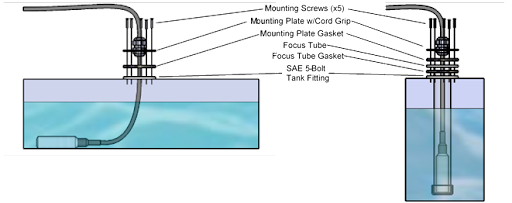
Fig 4. Submersible Pressure Transducer Mounting
How can choose the proper location for installing a pressure sensor?
Selecting the right location for installing a pressure sensor is critical for accurate readings and optimal performance. Here are some considerations to help you choose the proper location:
Can we install a pressure sensor near branches?
Installing a pressure sensor near branches or areas with potential obstructions should be approached with caution. The primary concern is to ensure that the sensor's measurements aren't affected by turbulent flow or erratic pressure variations caused by these obstructions.
Here are considerations regarding installing a pressure sensor near branches:
How close can a pressure sensor be to the branches?
The distance a pressure sensor can be from branches or obstructions depends on various factors including the type of sensor, the nature of the flow, and the specific application. There isn't a one-size-fits-all answer, but here are some general considerations:
Can we install a pressure sensor near an engine?
Installing a pressure sensor near an engine is possible, but it requires careful consideration of several factors to ensure accurate readings and the sensor's longevity:
Can we install a pressure transmitter in a furnace?
Installing a pressure transmitter in a furnace is possible, but it requires careful consideration due to the extreme temperatures and harsh conditions present in furnace environments. Here are key factors to consider:
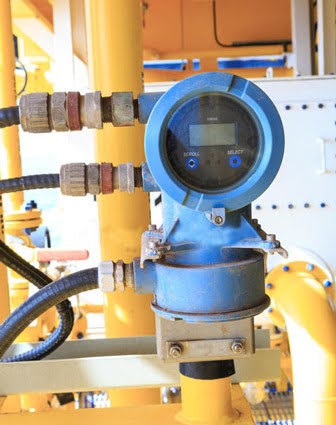
Fig 5. How to install a Pressure Sensor
Installation Tips and Consideration
Mounting Options and their Impact on Measurement Accuracy
The mounting of a pressure transmitter can significantly impact its measurement accuracy. Different mounting options affect how the sensor interacts with the measured medium and the potential for errors or inaccuracies. Here are some common mounting options and their impact on accuracy:
1. Direct Mounting:
- Impact: Directly attaching the transmitter to the process pipe or vessel.
- Impact on Accuracy: This can provide accurate measurements as it minimizes potential errors introduced by tubing or fittings. However, vibrations or thermal expansion in the process line might affect accuracy.
2. Remote Mounting:
- Impact: Installing the transmitter away from the measured source and connecting it via tubing or capillaries.
- Impact on Accuracy: Longer tubing lengths can introduce errors due to pressure drop, temperature fluctuations, or potential leaks in the tubing. Thinner capillaries are susceptible to clogging and can affect accuracy.
3. Flange Mounting:
- Impact: Using flanges to attach the transmitter to the process piping.
- Impact on Accuracy: Properly sealed flange mounting can provide accuracy similar to direct mounting. However, issues with gaskets or flange alignment can lead to inaccuracies.
4. Diaphragm Seals:
- Impact: Using a diaphragm seal to separate the transmitter from the process medium, often used in corrosive or high-temperature environments.
- Impact on Accuracy: This can protect the transmitter but may introduce errors due to the transfer of pressure through the seal. The selection of appropriate diaphragm materials is crucial to minimize inaccuracies.
5. Surface Mounting:
- Impact: Attaching the sensor to the surface of a vessel or pipe.
- Impact on Accuracy: Accuracy can be affected by the quality of the surface and the potential for uneven pressure distribution across the surface.
6. Factors Affecting Accuracy:
- Pressure Loss: Longer tubing or capillaries can result in pressure losses, impacting accuracy.
- Temperature Variations: Thermal expansion or contraction in tubing or seals can affect measurements.
- Vibration and Shock: Mounting in areas prone to vibrations can introduce measurement errors.
- Material Compatibility: Choosing compatible materials for seals, fittings, and mounting components is crucial to maintaining accuracy in different environments.
7. Tips for Maintaining Accuracy:
- Calibration: Regular calibration helps correct any inaccuracies introduced by mounting methods.
- Proper Installation: Follow manufacturer guidelines precisely for each mounting option.
- Maintenance: Regular inspections and maintenance can detect issues affecting accuracy.
Selecting the most appropriate mounting method involves considering the specific requirements of the application, the environment, and the accuracy needed for the measurements. Consulting with experts and adhering to manufacturer recommendations is vital to ensure accurate and reliable pressure measurements.
Proper orientation and alignment of the pressure transmitter
The proper orientation and alignment of a pressure transmitter are crucial for accurate measurements. Here's why it matters and some key considerations:
Orientation:
- Vertical: Ensure that the transmitter is vertically aligned if mounted upright. This prevents potential errors due to the effect of gravity on the sensing elements.
- Horizontal: When horizontally mounted, align the transmitter properly to minimize potential inaccuracies caused by the weight of internal components or the impact of vibration.
Alignment:
Considerations:
Installation Tips:
- Follow manufacturer guidelines for the recommended orientation and alignment of the pressure transmitter.
- Use level indicators or instruments to ensure proper alignment during installation.
- Check for any stress, strain, or misalignment in the mounting and correct it before finalizing the installation.
- Regularly inspect and re-align the transmitter if necessary, especially after maintenance or any adjustments to the system.
Importance of Calibration:
Even with proper orientation and alignment, regular calibration is essential to ensure accuracy. Calibration helps correct any minor deviations caused by installation or environmental factors, ensuring the transmitter provides precise measurements over time.
Ensuring proper orientation and alignment, following manufacturer guidelines, and conducting regular maintenance and calibration are key practices to maintain the accuracy and reliability of pressure transmitters in various applications.
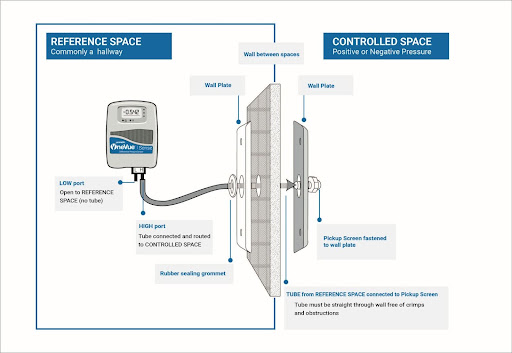
Fig 6. A Differential pressure sensor installation
How can choose the best position for pressure sensor installation?
Selecting the best position for pressure sensor installation involves considering various factors that can affect its accuracy and performance. Here's a step-by-step guide to help you choose the optimal position:
We should install a pressure sensor vertically or horizontally?
The orientation of a pressure sensor, whether installed vertically or horizontally, often depends on the specific application, the type of sensor, and the manufacturer's recommendations. Here are considerations for both orientations:
Vertical Installation:
Can the pressure sensor be installed at an angle?
Yes, pressure sensors can be installed at an angle in certain situations. However, installing a pressure sensor at an angle requires careful consideration of various factors to ensure accurate readings and optimal performance:
Pressure sensor type proper mounting hardware
Certainly! Different types of pressure sensors require specific mounting hardware to ensure secure installation and accurate readings.
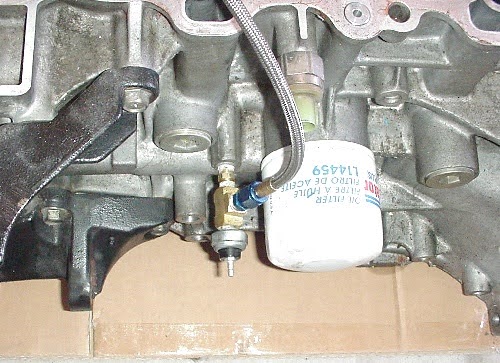
Fig 7. Oil gauge pressure installation
What are the safety tips we should observe when installing a pressure transmitter?
Installing a pressure transmitter involves working with potentially hazardous equipment and conditions. Observing safety measures is crucial to prevent accidents. Here are some safety tips:
Conclusion
Ensuring the accurate installation of a pressure sensor involves careful consideration of various factors. From choosing the right location based on environmental conditions and fluid dynamics to selecting the appropriate mounting hardware, each step plays a crucial role in achieving precise measurements. Adhering to manufacturer guidelines, following safety protocols in hazardous environments, and conducting regular maintenance contribute to the sensor's reliability and longevity. Whether considering mounting options, proper orientation, or alignment, attention to detail and thoroughness in installation are key to optimizing a pressure sensor's performance. Ultimately, a well-installed pressure sensor provides accurate data crucial for monitoring systems, ensuring safety, and maintaining operational efficiency.
To recap
Q: Where should a pressure transmitter be installed?
A: Install the transmitter as close as possible to the point where accurate pressure measurements are required for optimal accuracy.
Q: What factors affect pressure sensor installation?
A: Environmental conditions, vibration, fluid behavior, and mounting techniques are key factors influencing sensor installations.
Q: Can pressure sensors be installed near branches or obstructions?
A: It's best to avoid installing sensors near branches or obstructions that could disrupt flow or cause turbulence impacting sensor accuracy.
Q: How does temperature affect pressure sensor installation?
A: Extreme temperatures can impact sensor accuracy, materials, and functionality, necessitating suitable sensor choices for specific temperature ranges.
Q: What is the proper orientation for pressure sensor installation?
A: The proper orientation (vertical, horizontal, etc.) is specified by the manufacturer and depends on the sensor type and application requirements.
Q: Should pressure sensors be directly mounted to the pipeline or vessel?
A: Direct mounting is common, but proper sealing, stability, and protection from mechanical stress are crucial for accurate readings.
Q: What precautions are necessary for hazardous area installations?
A: Compliance with safety regulations, using certified equipment, proper grounding, and protective enclosures are vital in hazardous areas.
Q: Can pressure transmitters be installed remotely?
A: Remote installations are possible but require careful consideration of tubing, pressure losses, and temperature variations along the tubing.
Q: What's the impact of vibration on pressure sensor accuracy?
A: Vibration can introduce noise or affect stability. Secure mounting and suitable isolation mechanisms help minimize vibration effects.
Q: How does fluid behavior affect pressure sensor placement?
A: Understanding fluid behavior guides sensor placement to ensure accurate readings and minimize disturbances caused by flow dynamics.
Q: What's the significance of calibration post-installation?
A: Calibration ensures accuracy under specific installation conditions, accounting for factors that could affect sensor performance.
Q: Can pressure sensors be installed at an angle?
A: Yes, but angle installations might introduce measurement errors if not accounted for during calibration or sensor design.
Q: How does environmental exposure impact pressure sensor accuracy?
A: Environmental factors like humidity, chemical exposure, and dust can affect sensor performance, necessitating proper protection and sealing.
Q: Which sensor mounting option is best for minimizing pressure losses?
A: Flush mounting or direct attachment minimizes disturbances to flow, reducing pressure losses and ensuring accurate readings.
Q: What are the critical installation steps for pressure sensors in critical applications?
A: Following manufacturer guidelines, ensuring proper sealing, stable mounting, and considering environmental conditions are critical steps for critical applications.
References
https://www.researchgate.net/figure/Schematic-of-pressure-sensor-installation_fig3_258176225
https://www.pressuresensor.org/how-to-install-pressure-sensor.html
https://www.ato.com/how-to-install-and-wire-pressure-sensor-safely
http://www.theoldone.com/articles/oilpressure/
Recent Posts
-
Booster Pump Troubleshooting and Maintenance: How to Fix and Prevent Common Issues
1. Introduction Imagine turning on your faucet only to be greeted with a weak trickle of water when …22nd Apr 2025 -
Energy-Efficient Booster Pumps: Selection and Tips for Maximizing Performance
1. Introduction Imagine never having to deal with fluctuating water pressure, noisy pumps, or skyroc …19th Apr 2025 -
Booster Pumps for Sustainable Water Systems: Irrigation and Rainwater Harvesting Solutions
1. Introduction Water scarcity is no longer a distant threat—it’s a reality affecti …16th Apr 2025

